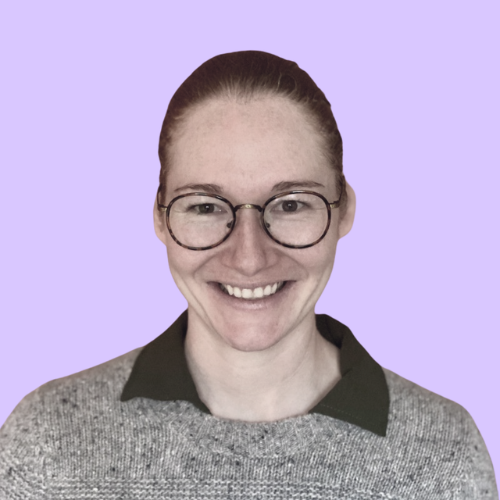So, you used a One AI recipe to build a strong machine learning model and deployed it—congratulations!
But the journey doesn’t end there.
Building a model isn’t just about making predictions; it’s about transforming them into insights that help you understand your organization and take purposeful actions to improve processes and address challenges. For instance, identifying the key drivers of high performance can inform targeted training programs, while understanding factors behind low performance might guide role adjustments or address issues affecting outcomes.
In One AI, our visualization templates go beyond raw predictions, offering strategic insights and actionable opportunities for data-driven decisions. Built from tried-and-true visuals refined over years with clients, these templates simplify complex results and make them easier to communicate to stakeholders.
By using these ready-made templates, you save time and benefit from visuals that have proven successful across organizations. Let’s explore some of the visualizations available in our templates—tools you can deploy and customize to maximize value for your organization.
Visualizations That Empower Strategic Decision-Making
1. Model Performance
We believe in transparency, which is why model performance is front and center. This visualization includes key metrics like F1 Score, Precision, and Recall for both classes (high and low performance). Showing performance for each class is critical, especially in imbalanced datasets common in people analytics, like voluntary attrition or new hire failure.
For instance, if only 10% of employees are exceptional performers and the model always predicts average performance, it might appear highly accurate overall but completely fail to identify high performers. Breaking down metrics by class ensures you get a true picture of your model’s effectiveness and avoids misleading conclusions.


2. Drivers Visualization
What factors drive high or low performance in your organization? The Drivers Visualization shows the most important factors for each outcome and how much they contribute. The drivers are ranked by their impact, making it easy to see what matters most.
For example, previous performance ratings or tenure might strongly influence whether someone is likely to perform well or not. Understanding these drivers helps you focus on the right areas to improve performance or predict outcomes more effectively.
.png?width=661&height=541&name=image%20(12).png)
.png?width=671&height=508&name=image%20(13).png)
3. Filtered Drivers Visualization
One of the most powerful aspects of these visualizations is their flexibility. By filtering the Drivers Visualization by specific groups (e.g., department, tenure, location), you’ll see how the drivers rearrange themselves for that subgroup. This dynamic capability, powered by SHAP, lets you drill down into group-specific insights. It’s a game-changer for organizations looking to create tailored strategies that address unique needs.
.png?width=650&height=431&name=image%20(14).png)
.png?width=710&height=449&name=image%20(15).png)
4. Feature Directionality and Impact
Sometimes, the same driver can influence both high and low performance but in different ways. This visualization helps you understand not only the directionality (positive or negative impact) but also the magnitude of each feature’s contribution.
For instance, a factor like salary might slightly predict low performance while strongly predicting high performance. These insights guide where to focus your efforts—start with features that have high impact and are feasible to influence.
.png?width=843&height=497&name=image%20(16).png)
.png?width=507&height=625&name=image%20(17).png)
5. Where Does High Performer Potential Sit?
This visualization provides a clear breakdown of high-performance likelihood across key dimensions such as organizational units and job levels. It categorizes employees into low, medium, or high likelihood of achieving top performance, making it easier to pinpoint where high-potential employees are concentrated.
For example, executives may have a higher likelihood, while other groups may need targeted development. The ability to compare across dimensions ensures that your strategies are focused and effective, helping to drive meaningful improvements throughout the organization.
.png?width=843&height=243&name=image%20(18).png)
-png.png?width=746&height=707&name=image%20(19)-png.png)
-png.png?width=747&height=482&name=image%20(20)-png.png)
6. Individual Predictions
Drilling down to individual employees, this view shows each person’s likelihood of being a high performer, alongside the features most influencing their prediction. While machine learning is most accurate at an aggregate level, individual predictions are still valuable for tailored actions, such as identifying candidates for leadership development programs.
Note: This visualization must be permissioned and should be used thoughtfully.
.png?width=744&height=298&name=image%20(21).png)
-png.png?width=885&height=359&name=image%20(22)-png.png)
-png.png?width=1251&height=673&name=image%20(23)-png.png)
-png.png?width=1288&height=740&name=image%20(24)-png.png)
The Value of SHAP and Customization
All these visualizations use SHAP (SHapley Additive exPlanations), a method that ensures transparency and flexibility in understanding model predictions. SHAP works by building a small, individualized model for each data point (such as an employee) to explain why the main model made its prediction. This means SHAP doesn’t just tell you what the prediction is—it shows you how much each factor contributed to that prediction.
Because SHAP works at this detailed level, you can filter or split results by any dimension relevant to your data, such as department, tenure group, or geographic location. The visualizations then dynamically adjust to reflect those specific groups, helping you uncover trends and insights tailored to your organization’s needs.
From Insights to Action
The ultimate goal of these visualizations is not just to analyze your data but to inspire action. By identifying the key drivers of performance, understanding how they vary across groups, and pinpointing areas for improvement, you can make strategic decisions that align with your organizational goals. Use these tools to:
- Design interventions that address critical factors; for example, focus on key drivers of low performance.
- Develop targeted programs to support specific groups; for example, create training for new hires or managers.
- Inform long-term planning and organizational strategies; for example, guide succession planning or hiring strategies.
Remember, machine learning is a tool to help you understand and shape your organization. The visualizations in One AI are here to ensure you’re not just building models but also building a stronger, more informed organization.

